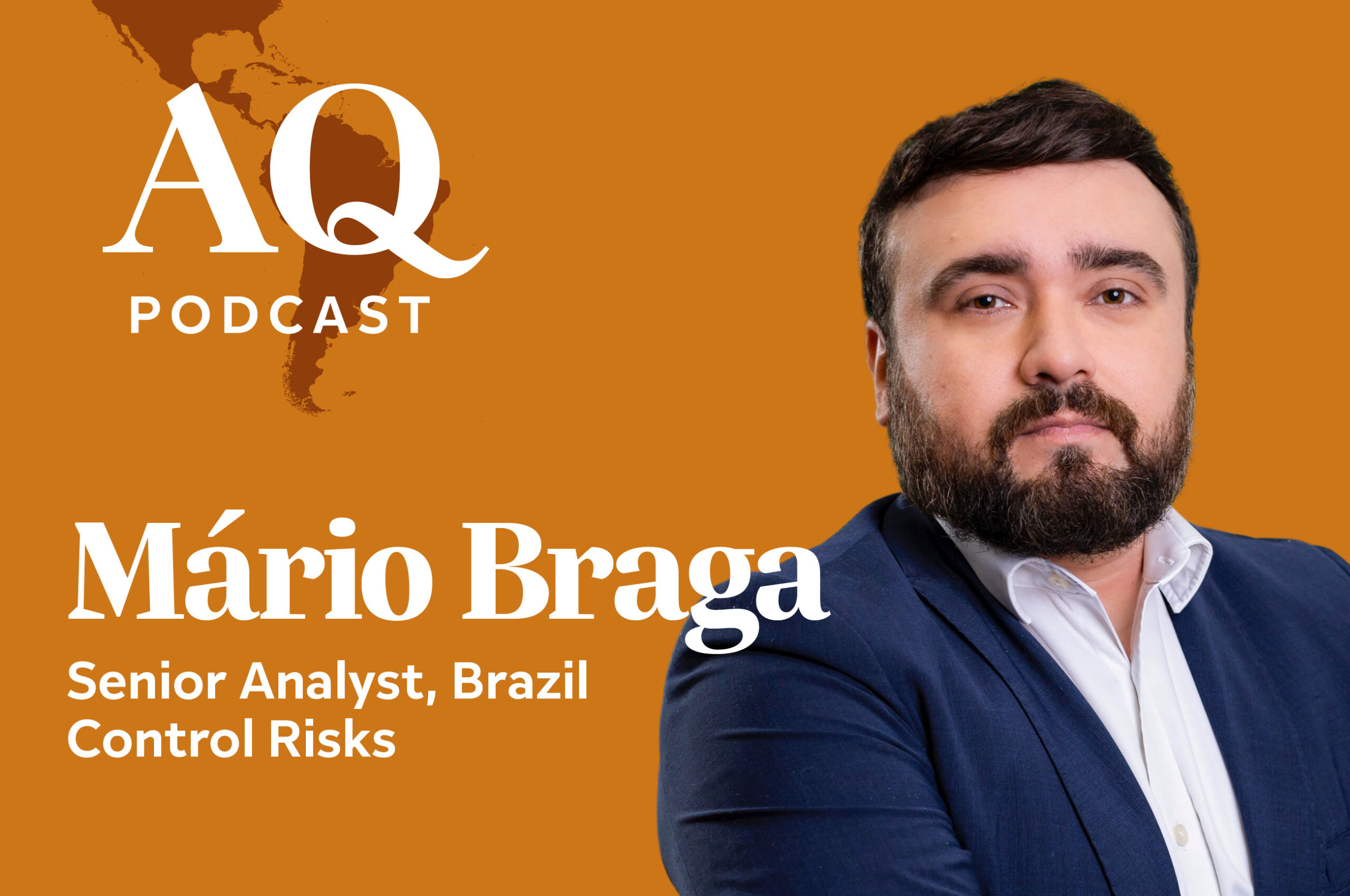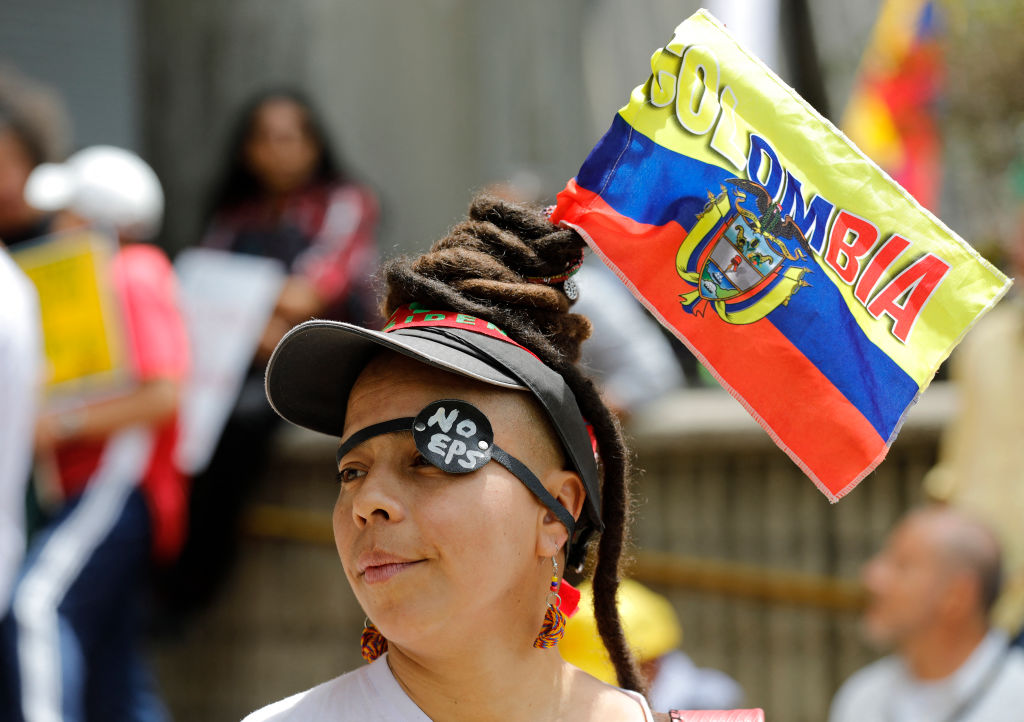US-Colombia Relations at a Crossroads
US-Colombia Relations at a Crossroads
On August 4, 2005 Colombian President Alvaro Uribe visited President Bush at his ranch in Crawford, Texas.
On August 4, 2005 Colombian President Alvaro Uribe visited President Bush at his ranch in Crawford, Texas. Both Presidents hailed their strategic partnership and shared concern for combating terrorism and advancing economic growth and democracy in the Americas. The Crawford meeting was public confirmation of the close relationship between the US and Colombia. Today, the good feelings of Crawford are being replaced with growing concern that Colombian and US relations are at a crossroads, and could take a turn for the worse.
Colombia remains the fifth largest recipient of US foreign assistance; it is the US’s closest ally in a region that has increasingly drifted away from the Bush Administration and its policies; the two countries are working hand in glove to combat drug trafficking and narco-terrorism; and President Bush recently submitted the FTA for Congressional ratification. All of these positives, however, mask a growing sense of unease both in Colombian and US policymaking circles. It is clear that US priorities lie elsewhere and Colombian interests do not mirror US interests.
There is widespread consensus in the US about the need to support the Uribe Administration. The question today is whether that support has been effective, and if funds destined for Colombia might not be better spent elsewhere. Since Plan Colombia began seven years ago, the US has provided the Government of Colombia with more than $5 billion of aid. The results, from a US perspective, have not been good. The original goal of Plan Colombia was to combat drug trafficking. Nevertheless, the amount of coca under cultivation and the quantity of cocaine sent to the US is the same, or greater, than when Plan Colombia began (depending on the survey used).
Following September 11, President Uribe cleverly equated the fight against the Fuerzas Armadas Revolucionarias de Colombia (FARC) and the Ejercito de Liberación Nacional (ELN) with the global war on terror. As a result, the Colombians were given more flexibility in how US assistance could be used. Plan Colombia morphed into essentially an anti-FARC strategy, or as President Uribe likes to call them, narco- terrorists. On that front, the results have been mixed. While the Colombian military is better equipped and trained than ever before, and have scored significant victories on the battlefield, they have yet to capture any of the FARC’s leaders. As funding pressures for Iraq grow, many on the Hill are questioning why the US should continue to send over $725 million a year to Colombia, when drug cultivation and trafficking are up and FARC leadership remains intact.
The peace process between the Colombian Government and the Autodefensas Unidas de Colombia (AUC) is another source of worry for US lawmakers. The US considers the AUC (as well as the FARC and the ELN) foreign terrorist organizations, complicating the use of US funding for any peace efforts. It has not helped that President Uribe’s negotiations with the AUC have been in a perpetual state of crisis since they began in November 2003. Opponents argue that the paramilitaries are the worst human rights abusers in the country, nothing more than drug-trafficking thugs using a bogus right wing ideology to justify their terror and massacres. Concern remains that the peace process with the AUC will only benefit terrorists and that fundamental issues such as truth, justice and reparation are not being addressed. The US human rights community has made this case effectively with the Congress.
Further complicating matters is the issue of extradition. One of the key tenets of US policy in Colombia is the extradition of individuals who have been involved in drug trafficking to the US. This policy is clearly at odds with the Uribe Administration’s efforts to strike a deal with the AUC. If President Uribe attempts to extradite the leaders of the AUC to the US, the process will break down, and the remaining AUC leaders will return to violence. If he blocks extradition to the US in order to conclude the peace process, a significant breakdown in relations would certainly ensue.
Because of this, the Colombian government has been scrambling to try to solve an insoluble problem: how do you strike a deal with the AUC leaders without extraditing them? The short answer is you don’t. And that is why the peace process has been at an impasse for well over a year. The highly controversial (at least internationally) Peace and Justice Law which was passed in Congress in June 2005, has yet to be applied to any demobilized paramilitaries. In turn, whenever it appears an AUC leader will be extradited, the paramilitaries threaten to break off talks. This has led to the suspension of extradition orders by President Uribe who argues it is done in the interests of the peace process. To curry favor with the Bush Administration, President Uribe continues to extradite Colombians to the US, more than any other President that has preceded him. However, not one person that has been extradited is key to the peace process.
With coca cultivation and cocaine trafficking maintaining or exceeding pre Plan Colombia levels, an essentially intact FARC leadership, Congressional concerns about the AUC peace process and human rights, and US government insistence on extradition of individuals tied to drug trafficking, US-Colombian relations face a rocky future. If Democrats manage to wrest away the House or Senate in the upcoming mid-term elections, the situation could become even more complicated, given that they have raised the most questions about US policy in Colombia.
In contrast to the Bush Administration, President Uribe is riding a tide of high poll numbers. In May, he easily won re-election, and his allies control both the House and the Senate. Violent crimes are at their lowest levels in 17 years, and President Uribe’s “Democratic Security” policies are widely hailed as successful. The peace process with the AUC has resulted in the demobilization of more than 30,000 armed combatants. Despite these accomplishments, President Uribe is still in search of a legacy; being the President who brought peace to Colombia would guarantee one. How he goes about achieving this is the biggest question. A military strategy has not worked, so perhaps negotiations with the AUC, ELN and the FARC are the answer.
All of these elements reflect a fundamental problem in the US-Colombia relationship. The US’s top priority is for the flow of drugs from Colombia to stop. Colombia’s top priority is to achieve a long-lasting peace, either through military operations or a negotiated settlement. Relations between the two countries will likely grow more tense if Colombia attempts to negotiate a settlement with the FARC, or if the leaders of the paramilitary groups pay their penance in Colombian finca carceles rather than US federal penitentiaries.
US support for Colombia is not going to increase, and will probably drop, in the upcoming years. Uribe has made recent overtures to the FARC, opening up the possibility that he might be ready to negotiate. Despite US assistance, the Colombian armed forces have not been able to defeat the FARC. President Uribe might reason that he has nothing to lose and that cutting a deal is the best way to ensure his legacy. If that’s the case, he shouldn’t expect any repeat visits to Crawford.
Michael Beaulieu was the Coordinator of the OAS Mission to Support the Peace Process in Colombia until last February. He holds a D.Phil. in Politics from St. Antony's College, University of Oxford.
ABOUT VIEWPOINTS AMERICAS
ViewPoints Americas is a publication of the Americas Society and the Council of the Americas. It helps Council member companies achieve their business goals by stimulating thoughtful debate on the most pressing issues facing Latin America. The positions and opinions expressed in this publication are those of the authors or guest commentators and speakers and do not represent those of the Americas Society and the Council of the Americas or its members or the Board of Directors of either organization. No part of this publication may be reproduced in any form without permission in writing from the Americas Society and the Council of the Americas.







